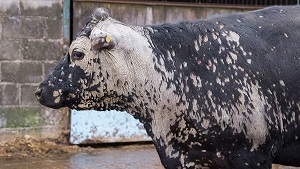
How farmers can prevent and treat ringworm in cattle

By Dr Adrianatus Maseke
Meatco’s Senior Manager: Safety Health Environment and Quality Assurance.
Ringworm is a very common and highly transmissible skin infection passed both from cattle to cattle and from cattle to humans.
The disease is caused by the spore-forming fungi called Trichophyton verrucosum. The disease, which can be spread through grooming utensils such as brushes, compromises the health status of animals severely causing the growth of fungus on the animal’s skin and leading to Alopecia or hair loss and scabbing on the infected area.
Furthermore, due to itching, the animal then spends more time scratching itself than eating, resulting in weight and condition loss. The hide also gets damaged because the skin thickens and becomes crusty, flaky, and greyish.
This has a detrimental financial and health impact on our producers, as their animals lose weight and the herd decreases because the disease is highly contagious. Producers are also susceptible and at risk of contracting the disease because the disease is zoonotic.
The disease is difficult to treat, and once infected an animal becomes resistant to treatments or ordinary cleaning. The animals need heavy disinfection to clear the ringworm.
Producers are urged to treat the disease with anti-fungal agents by dipping or scrapping animals with these chemicals. Products that farmers can use are Enilconazole, which they can use to wash the animal three times a day and Betadine. Vitamin D also helps the skin to recover, while antibiotics prevent secondary infections.
The disease can be controlled, and producers must ensure that they look out for clinical signs and report their animals to the nearest state veterinary office for treatment to be administered under the supervision of state veterinary officials.












































